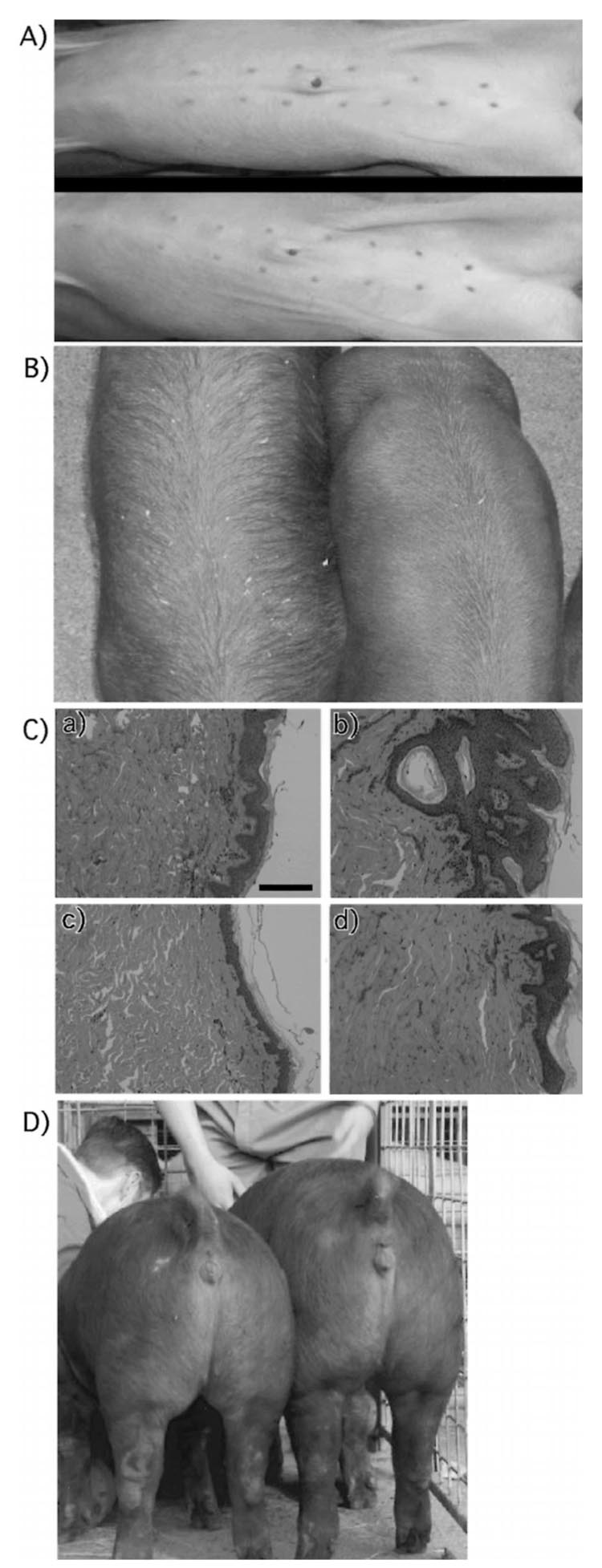FIG. 2.
Phenotypic variation among control genetically identical cloned pigs. A) Variation in number of teats. All but one of the cloned pigs had 12 teats, arranged 6 on the right and 6 on the left. B) Hair growth pattern variation. The cloned pig on the left has elongated and more sparse hair than the other two clones, with a tendency for dirt (shavings) to get trapped in the hair. C) Histology of porcine skin from cloned (b and d) and control (a and c) pigs at 25 weeks of age. All samples indicated normal morphology with well-organized epidermal and dermal layers, except for one cloned pig (b) that showed irregular epidermal hyperplasia and hyperkeratosis. Results from four representative animals are shown. Magnification ×10. D) Variation in body weight in cloned pigs is reflected by two 27-wk-old cloned pigs originating from the same nuclear donor cell line and born to the same recipient mother.

